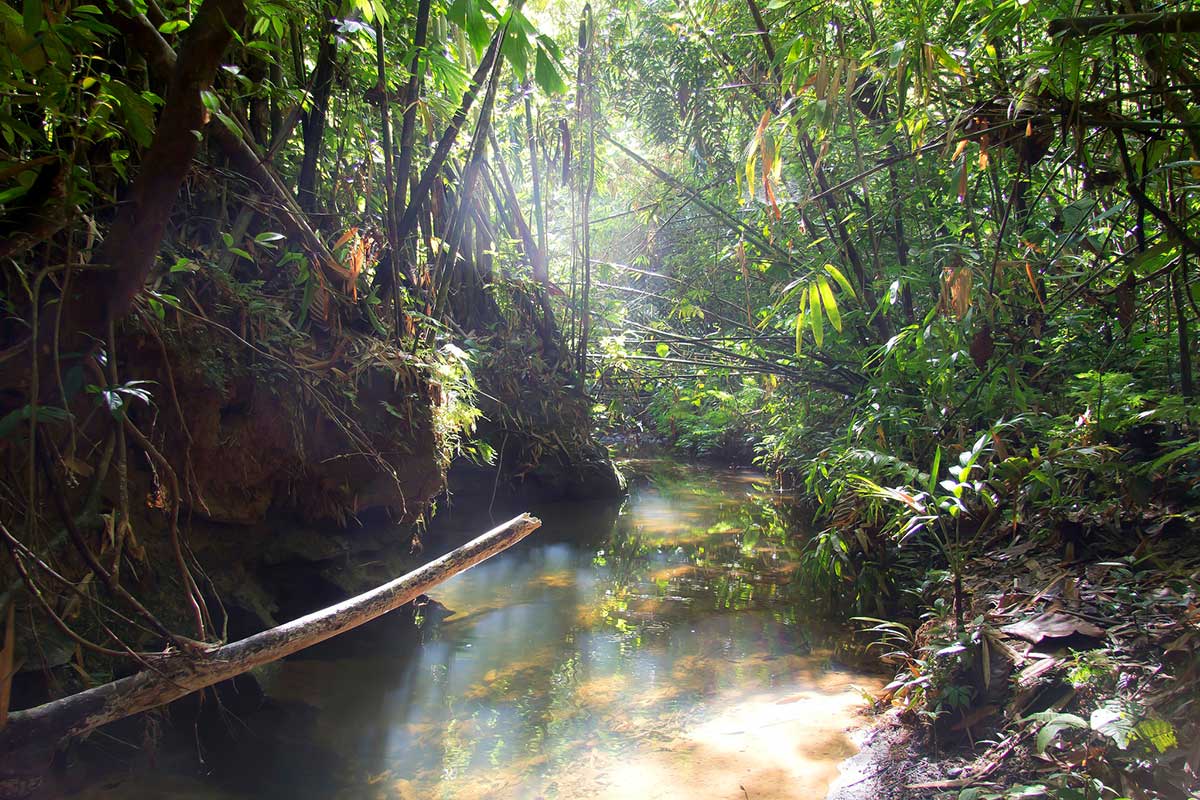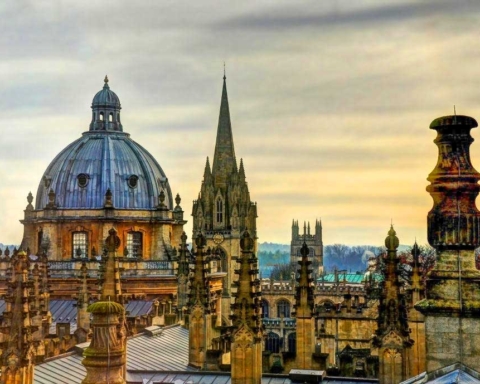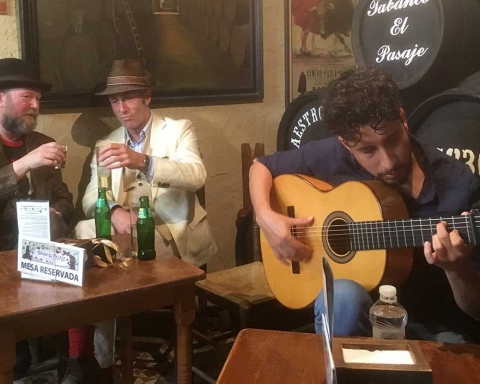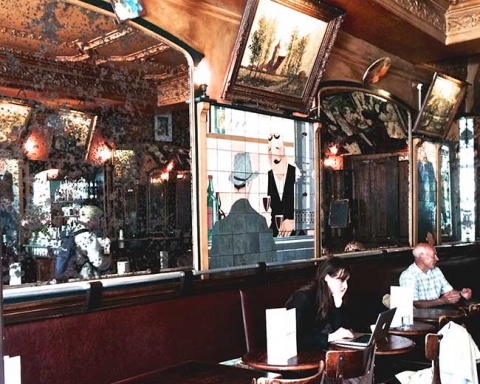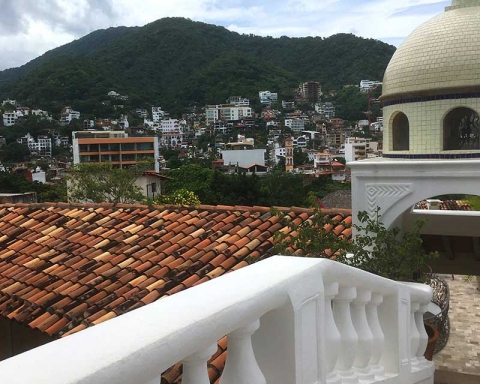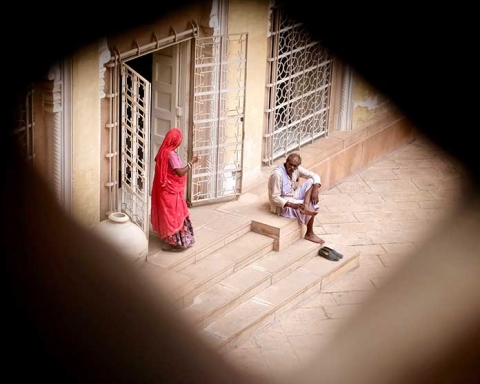Chris Sullivan follows in the footsteps of James Brooke to discover the lost secrets of Sarawak on a truly incredible journey to Borneo.
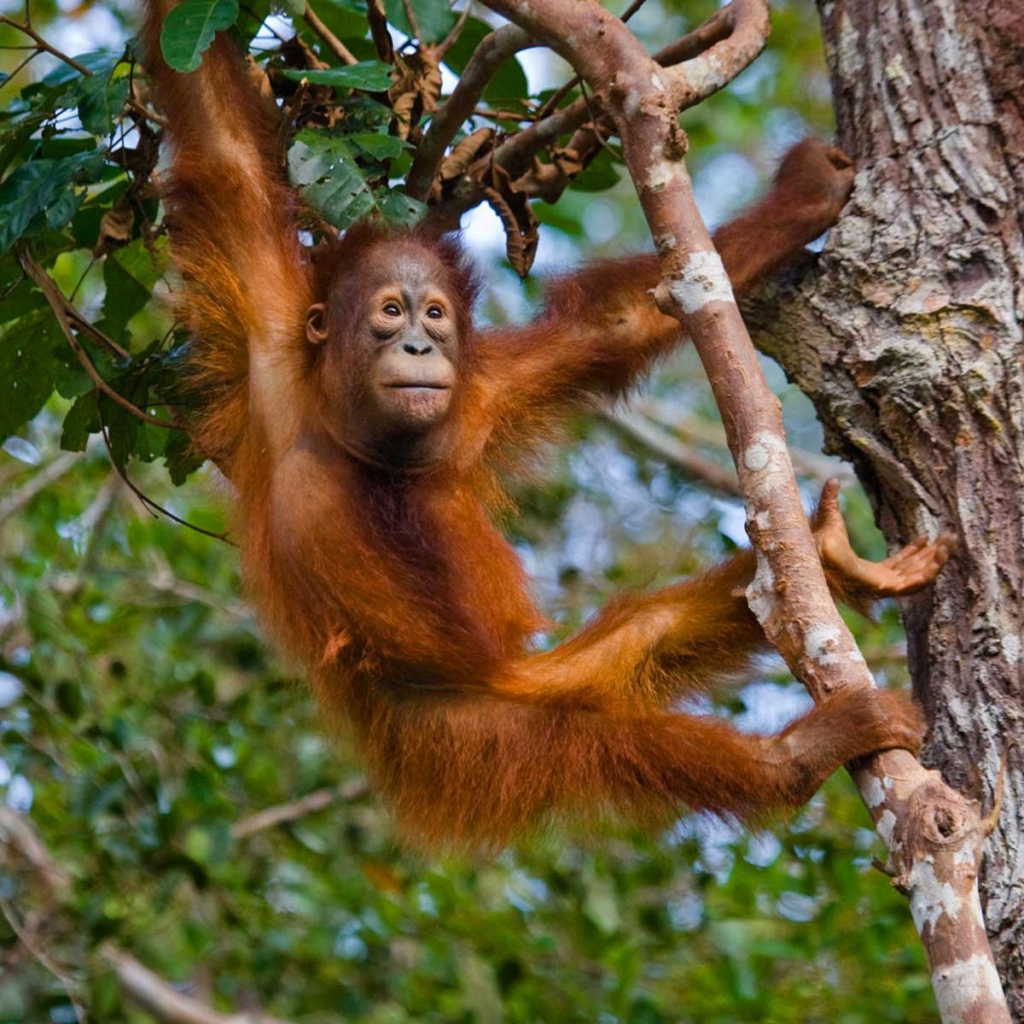
M first sight of Borneo was in a David Attenborough retrospective special. He visited the world’s third largest island in 1956, met tribes who seemed from another century and rescued a baby orang utan. Ever since I’ve wanted to visit. The it is one of the last bastions of unmitigated oddness, populated by scores of tribes: warrior Dayaks with blackened filed-down teeth and blow pipes; the Pena, still covered in traditional tattoos, and the Iban, who still hunted heads after WWII. Borneo is still home to huge variety of exotic wildlife. Orang-utans, proboscis monkeys, saltwater crocodiles and the magnificent hornbill, alongside the world’s smelliest fruit, biggest flower and largest moth – at some 10 inches wide. Of course, no-one I knew had ever been there which, considering that today everyone has been everywhere, it made it even more appealing. I arrived in Kuching, the capital of Borneo’s main ‘county’ Sarawak, some 15 hours after I left home and deposited myself in a suite the size of my flat in the city’s newest hotel, The Pullman, and looked out over the city.
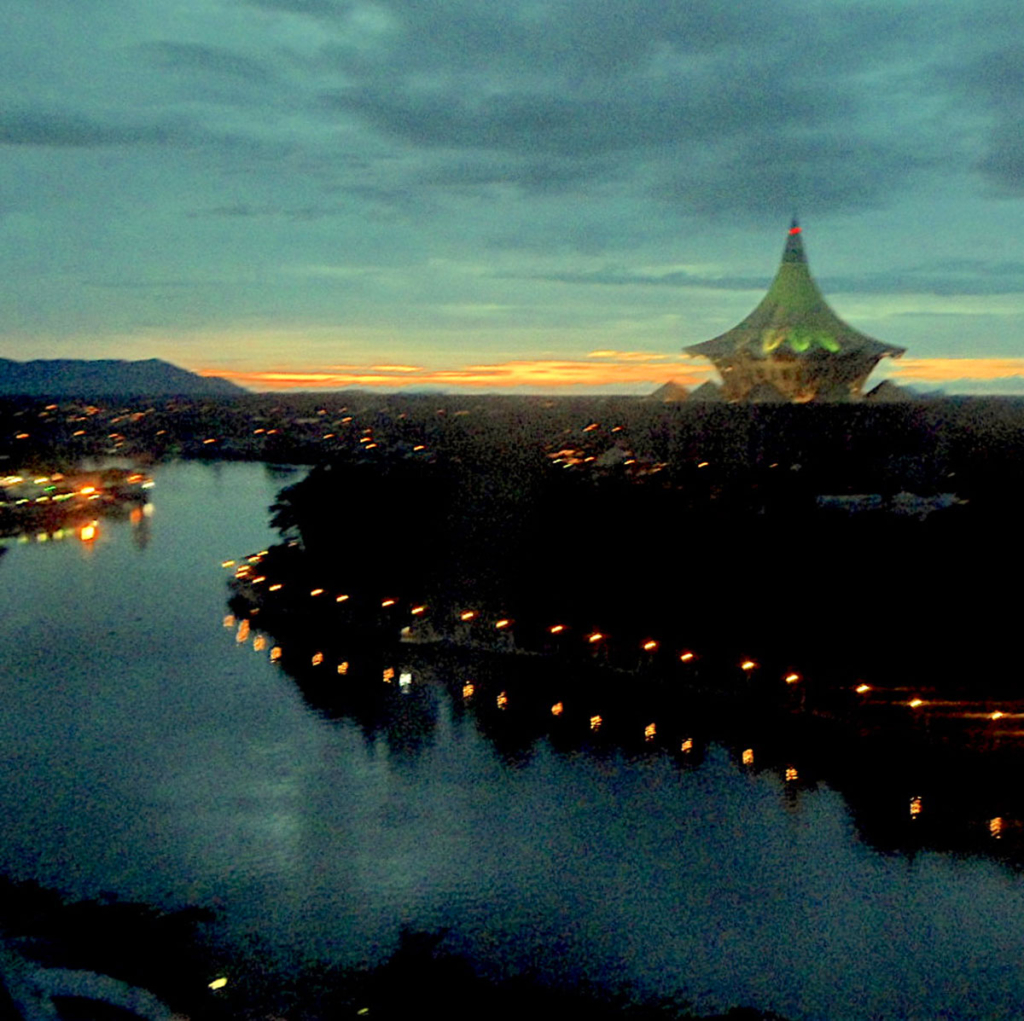
The next day I moseyed on down to the Sarawak Village to get a handle on the island. Sarawak is one of two Malaysian states of Borneo; the other, Sabah, lies to the north and in between lies the independent sovereign state of Brunei. To the South lies the Islamic Indonesian Borneo, which most folk never mention. Sarawak itself is very British. Everyone speaks English; they drive on the left, have UK plugs and are extremely polite and incredibly well mannered. This is down to the mad bad and dangerous to know, James Brooke, the first white Rajah of Sarawak (see CHAP Summer 22). Sarawak Village is run by these tribes who exhibit their food, skills and wares in a rather hokey down-at-heel fashion. We tried our hands at a blowpipe, were chased by a monkey and took in a surprisingly marvellous performance of tribal song and dance, the likes of which I’d never heard before.
The next day, my aches subsided, we took a boat to Bako, Sarawak’s oldest national park established in 1957, and took in a jungle walk up and over a mess of tangled vines and rocks covered by a canopy of trees, until we stumbled on a most beautiful barren beach where we had no option but to swim in the crystal-clear waters. We returned to see a gang of longtailed macaque monkeys emptying our bags and running off with my wife’s antihistamine tablets and our snacks. We also saw a pair of Bornean bearded pigs, a gang of proboscis monkeys, a plantain squirrel, crazy looking frogs and a fluorescent green Asian pit viper wrapped around a branch. My 8-year-old son was so excited he could hardly speak, while I made do with bad sunburn. It’s easy to forget that Borneo is on the Equator.
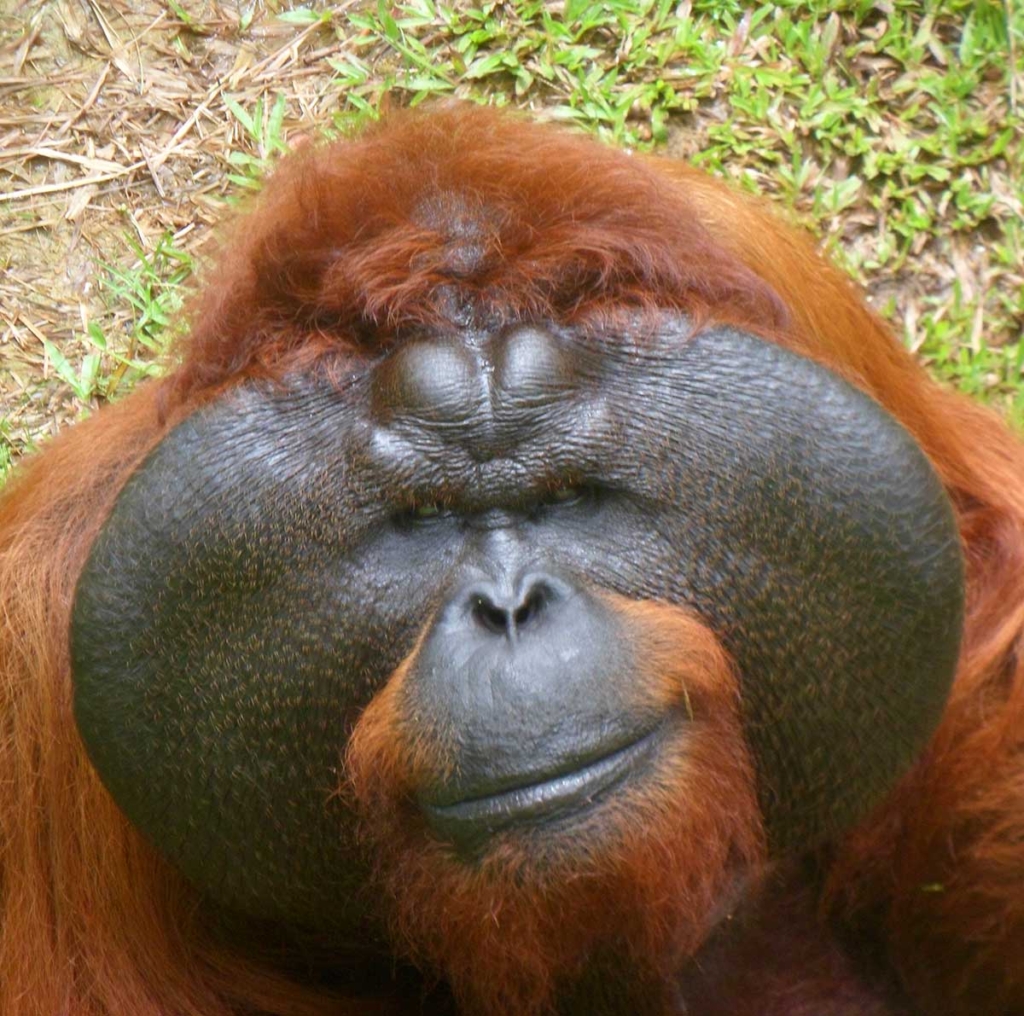
After a few hours in a cold bath, a liberal anointing in Aloe Vera and a big dose of painkillers, I woke the next day looking like a freshly scalded lobster. Luckily, we’d planned a day with the Orang Utans at The Semenggoh Wildlife Centre, which cares for wild animals that have been found injured in the forest, orphaned, or kept as illegal pets. On arrival we were given a quick orientation lecture and whisked into the monkey’s enclosure to chop up food (guava, banana, sweet potato, papaya leaves and hearts of palm) for the Orang Utans, before mucking out and cleaning their cages. When all done we fed these magnificent creatures by hand through a cage and then observed them in their rather large enclosures. My son then adopted an Orang Utan called Doris for a nominal sum that goes straight back to helping prolong their existence. We met former ad executive Naomi from Surrey, who had dropped all to come and work here, and Australian Kerrie who was training to become a helper. Both were beaming with joy.
After lunch we went into the rainforest to see the results of the Centre’s efforts, and saw gangs of rehabilitated Orang Utans (which is Malay for ‘person of the forest’). We stood mouths agape watching these utterly incredible creatures swinging through the trees and playing for an hour. A life changing moment for my little boy, he still asserts that this was the best day of his life! Bornean orang-utan populations have declined by more than 50% over the past 60 years, and the species’ habitat has been reduced by at least 55% over the past 20 years, through logging but mainly deforestation in pursuit of palm oil, which has no nutritional value and is used in a huge variety of products such as pizza dough, chocolate, instant noodles, margarine, biscuits, ice cream, pot noodles and packaged bread. The most threatened orang-utans are those that live in Northwest Borneo around Sarawak, where a mere 1,500 individuals or so remain.
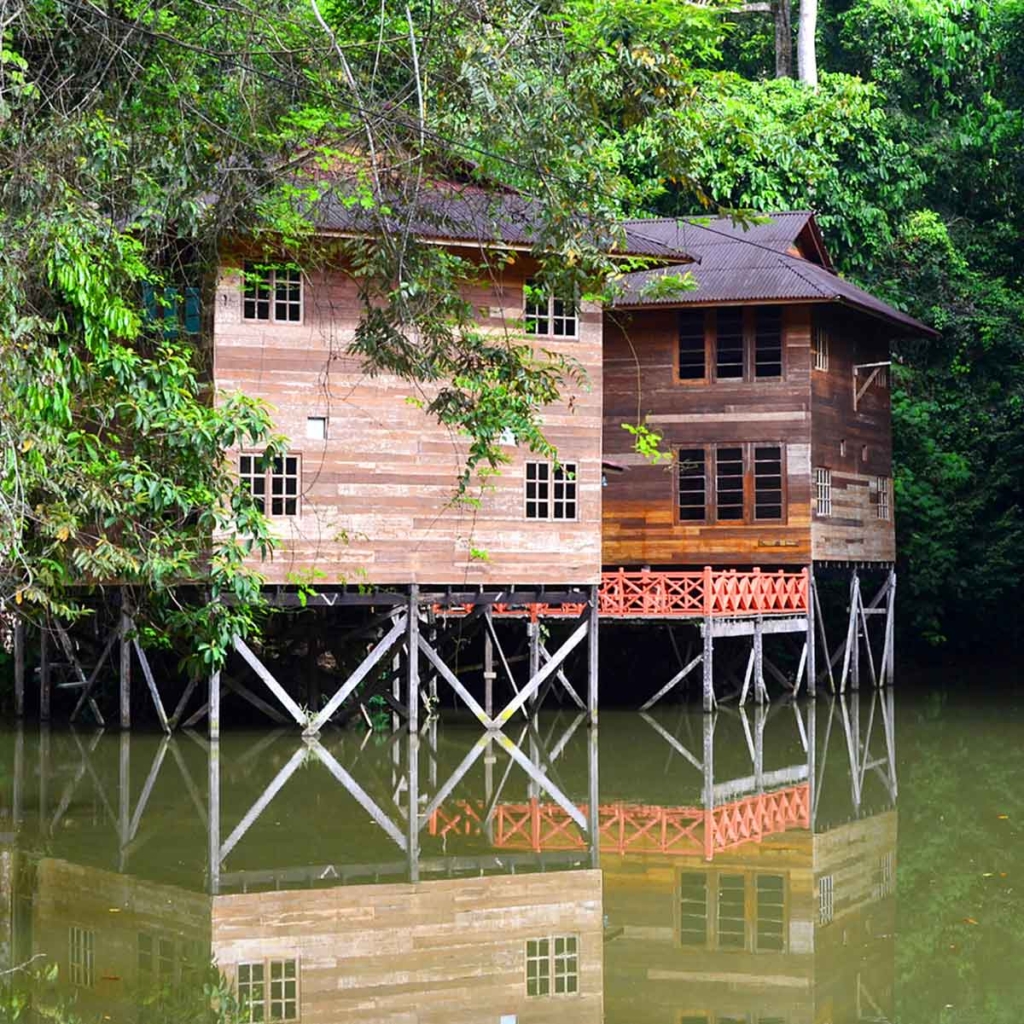
By now we had switched hotels to the lovely Riverside Majestic, less modern than the Pullman but infinitely more charming. We had stayed one night at the tree houses in Permai Rainforest Resort that overlooking the beach, which are very rustic, very novel and certainly worth a look.
We dined at a rather special restaurant, The Dyak, which purveys a mix of Iban, Bidayuh and Orang Ul cuisine. On the recommendation of Dyak’s owner Alistair (his grandmother was a Dayak Princess whose feet were never allowed to touch the floor) we feasted on chicken cooked in bamboo with tapioca leaves; Tilapia garnished with ginger and chillies wrapped in turmeric leaf, steam-baked Dayak style. Bitter nuts (petai) stir-fried with fragrant wild ginger flowers, onions and anchovies, star gooseberry stir-fried with egg, and giant jungle ferns stir-fried with fragrant wild ginger flowers. Simply incredible, it was a foreign and unfamiliar as Borneo itself.
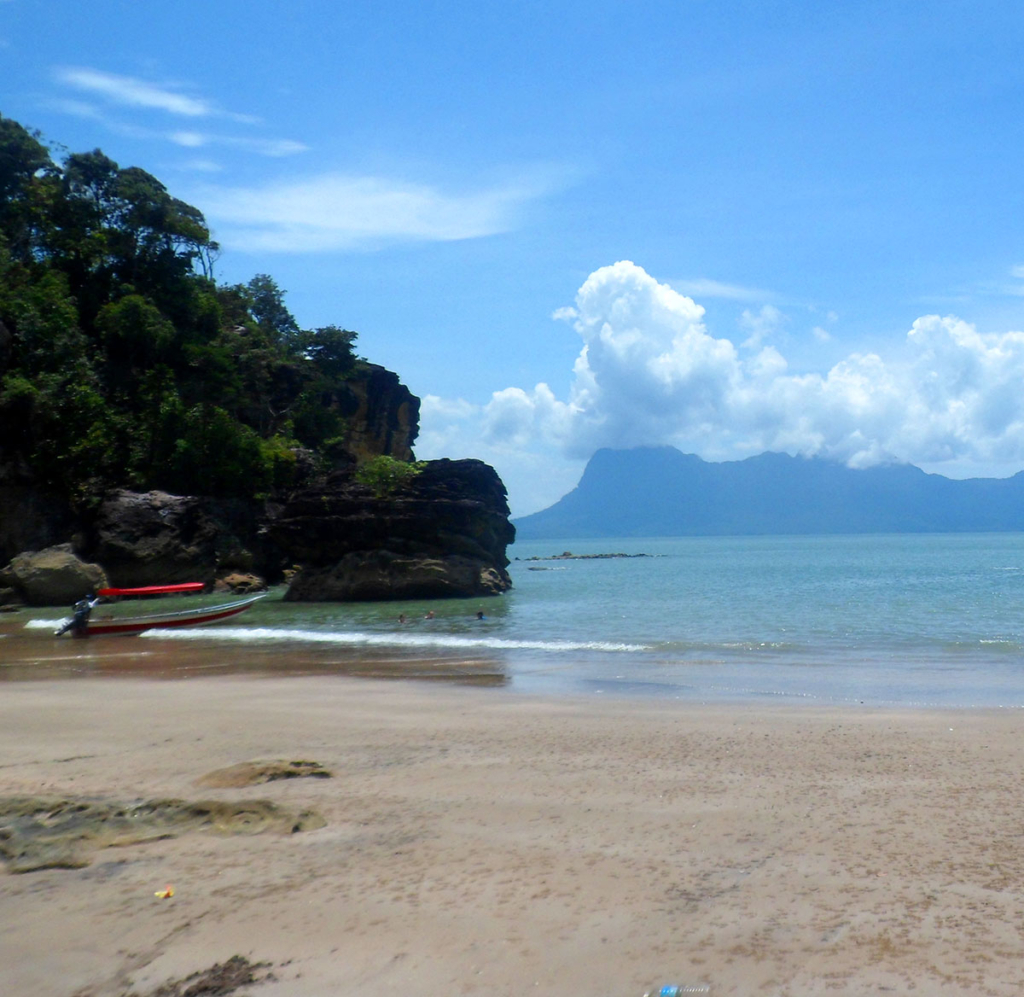
All in all Sarawak is an amazing place to visit. It is also really inexpensive. A double room at the Riverside, including a marvelous breakfast, was just £40, as was the Damai beach Resort, while a three-course meal for three including drinks at Dyak was £40 and a mere £45 at Top Spot for a feast including huge prawns, crab, scallops and sea bass. But if you’re on a tighter budget you could eat for £6 a day (a big bowl of Sarawak Laksa at Mom’s Laksa Kopitia is £1) and stay at the Home Stay Kuching for £15 a night. At whatever price, Sarawak is an incredible destination almost untouched by tourism, waiting to be discovered by the world. I’d get there soon if I were you.
Chris Sullivan flew Malaysian Airlines. Special thanks to Jo Hartley at Hill Balfour for arranging the journey.
www.sarawaktourism.com

